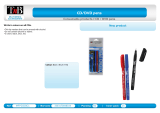
C H A P T E R 1
About your interactive projector
2 smarttech.com/kb/170295
Features
Interactive projector
LightRaise 60wi (SLR60wi) LightRaise 60wi2 (SLR60wi2)
A wall-mounted projection engine that uses
DLP® technology by TexasInstruments™,
providing BrilliantColor™ performance and
quality Gamma 2.2 correction with Bright
Classroom, Dark Classroom, sRGB White, Wall
Color, User and SMART Presentation modes.
A wall-mounted projection engine that uses DLP
technology by TexasInstruments, providing
BrilliantColor performance and quality Gamma
2.2 correction with Bright Room, Dark Room,
sRGB, User and SMART Presentation modes.
Finger and pen touch interaction that enables
you to tap, swipe, gesture or draw with two
fingers or the interactive pens.
Finger touch and pen interaction that enables
you to tap, swipe, gesture or draw with four
fingers or the interactive pens.
Dual touch interaction that enables two people to
draw and manipulate content on the surface at
the same time. The interactive surface can be
touched simultaneously by two fingers, by two
pens or by one finger and one pen.
Four-touch interaction that enables two people to
draw, gesture and manipulate content on the
surface at the same time. The interactive
surface can be touched simultaneously by a
combination of fingers and pens.
HD ready, wide screen, 2500 lumens, maximum
resolution supported 1080p
HD ready, 3000 lumens, maximum resolution
supported 1080p
NTSC, NTSC 4.43, PAL, PAL-N, PAL-M and
SECAM video system compatibility
HDTV (720p and 1080p) video system
compatibility and HD Ready (HDMI technology
and 720p) available, NTSC, NTSC 4:43, PAL,
PAL-N, PAL-M and SECAM (480i/p and 576i/p)
WXGA 1280 × 800 native resolution WXGA 1280 x 800 native resolution
16:10 native aspect ratio with support for 4:3 and
16:9 ratios with scaling
16:10 with support for 16:9, 4:3 and 5:4 with
scaling
3400:1 contrast ratio 2900:1 contrast ratio
100" (254.0 cm) diagonal maximum interactive
area size on a blank, vertical wall
100" (254.0 cm) diagonal maximum interactive
area size on a blank, vertical wall
0.36:1 throw-ratio 0.35:1 throw-ratio
Two built-in 10W speakers Built-in 9 W speaker
N O T E
For further details about projector features, see
the LightRaise 60wi interactive projector
specifications (smarttech.com/kb/170335).
N O T E
For further details about projector features, see
the LightRaise 60wi2 interactive projector
specifications (smarttech.com/kb/170603).





















